Matador Network's Blog, page 825
July 7, 2020
Paris tour guides protest

On Monday, July 6, as the Louvre reopened after four months of closure, there were more-than-eager museum-goers waiting at the foot of the glass pyramid. Paris tour guides took the opportunity of the broadcasted reopening to make their voices heard.
Dozens of Parisian tour guides, wearing face masks and holding signs with photos of the Mona Lisa, gathered outside the Louvre to protest the lack of relief funds allocated to out-of-work tour guides.

Photo: tamtam_tati/Instagram
Although $19 billion was dedicated to supporting the country’s tourism sector, very little of that found its way to the hand of guides on short-term contracts who desperately need relief. Margot Schmitz, one of the protesters, told Reuters, “The government is turning a deaf ear. We have no voice.”
According to the museum, around 7,000 visitors were expected to visit the reopened museum on Monday, and only one-fifth of the pre-pandemic tourism numbers are expected for the rest of the summer. 
More like thisMuseumsHow to crush the Louvre in one day
The post Paris tour guides protest outside the Louvre over lack of pandemic relief appeared first on Matador Network.

Russia bans marmot hunting

After both China and Mongolia reported cases of the bubonic plague last week linked to people eating marmot meat, Russia’s Altai region is heightening measures to stop people from hunting and eating marmots.
The plague germ, Yersinia pestis, can be found in rodents and their fleas. Eating raw marmot meat is therefore discouraged.
As recently as Sunday, the Chinese region of Inner Mongolia issued a warning after a hospital reported a suspected case of the disease. Nearby in the Khovd province, two cases were reported linked to people eating marmot meat. Now, to prevent any cases in Russia, authorities have been patrolling the area to enforce the hunting ban, and warn people about the dangers of eating marmot meat, Reuters reported.
While the disease still exists around the world, it can often be treated by antibiotics, though deaths from it can still occur. The Centers for Disease Control and Prevention has said, “In recent decades, an average of seven human plague cases have been reported each year [in the US]. Last year, a couple in Mongolia died of the plague after eating raw marmot kidney.” 
More like thisWildlife11 bugs with powerful stings and hellish diseases to look out for
The post Russia bans marmot hunting and eating to prevent bubonic plague appeared first on Matador Network.

Amtrak 2-for-1 roomette sale
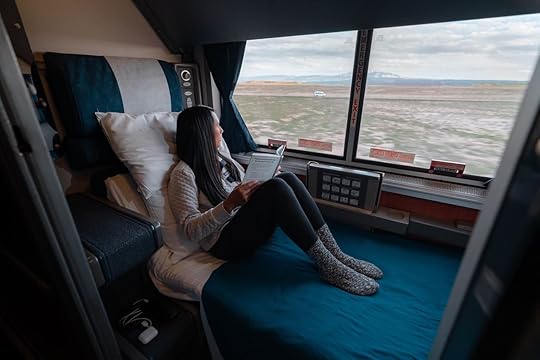
Since international travel is largely out of the question this summer, domestic travel will be the name of the game. In an attempt to capitalize on this, Amtrak is offering private rooms at a discount to encourage people to go on an epic cross-country train journey.
Under the new 2-for-1 promotion, one person can buy a “roomette” and another person can join for free. Roomettes are private, located in the sleeping cars, and feature two seats on either side of a large window that turn into two berths at night. Each roomette has towels and linens, access to a private bathroom and shower, and includes all meals.
Prices start at $193 from Chicago to Minneapolis; $243 from Atlanta to New Orleans; $319 from Washington, DC, to Chicago; and $416 from New York City to Savannah. More options are available on Amtrak’s website. Discount fares can be booked via the Fare Finder, or using the code “V306” when booking through the Amtrak app.
Roomettes can be found on the California Zephyr, Capitol Limited, Cardinal, City of New Orleans, Coast Starlight, Crescent, Empire Builder, Lake Shore Limited, Silver Service, Southwest Chief, Sunset Limited, and Texas Eagle.
The deal is available for booking until July 17, for travel dates between July 13 and September 30. 
More like thisTrain Travel7 things to know before riding Amtrak across the country
The post Amtrak is offering 2-for-1 discount fares to encourage domestic travel appeared first on Matador Network.

New student visa rules in the US

New guidelines issued by US Immigration and Customs Enforcement are making life incredibly difficult for international students. According to the new rules, any students whose university offers classes entirely online this fall will be required to either transfer to another school where there are in-person classes or leave the country.
Although many universities have already announced their intention to transition to online classes — whether it be completely or a mix with in-person classes — this fall, the guidelines put pressure on schools to offer in-person classes as the Trump administration tries to force schools around the country to reopen.
According to the new rules, international students must take at least some classes in person, as new visas will not be issued to students whose entire curriculum is online. A student taking one or two in-person classes should be able to obtain a visa, but that means risking their health and safety to comply with the visa requirements.
The American Council on Education called the guidelines “horrifying,” and believes the new rules will result in heightened confusion as schools struggle to reopen safely in the fall. Terry Hartle, the council’s senior vice president, said, “ICE is clearly creating an incentive for institutions to reopen, regardless of whether or not the circumstances of the pandemic warrant it.”
The Associated Press reported that last year, nearly 400,000 international students received visas, and nearly 1.1 million attended universities in the United States, so this new measure will certainly have wide-ranging repercussions. 
More like thisFamily TravelWhy we’ll need exchange student hosts more than ever next year
The post International students in the US must leave if classes go fully online appeared first on Matador Network.

July 6, 2020
Bavaria Gourmet Trail guide
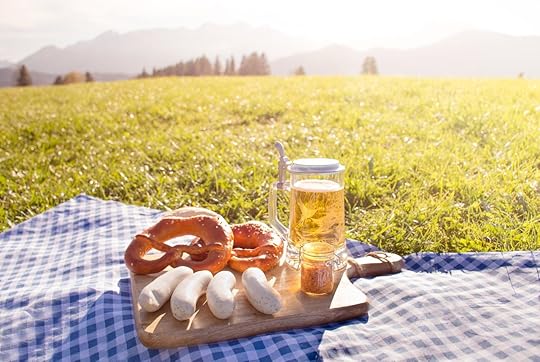
Crystal clear lakes, dense pine forests, storybook villages, and weißwurst sizzling on the grill — welcome to Bavaria’s Gourmet Trail. As the name suggests, this route is largely devoted to local eats inspired by southern Germany’s long-standing tradition of hospitality and indulgent cuisine.
The beauty of Bavaria is that it has plenty to offer year-round. Spring and summer are ideal for hiking, exploring the alpine trails, and swimming in the Isar River’s refreshing waters. Winter is the definition of comfort for anyone who loves to cozy up with a glass of glühwein (mulled wine) at a family-run inn. Regardless of the season, you’ll be able to go on a culinary adventure, sampling cheese, wine, sausage, pretzels, and desserts. For anyone who appreciates good food and fine beer and wine, Bavaria will very likely be the trip of a lifetime.
In Bavaria, even the salad is made of sausage.
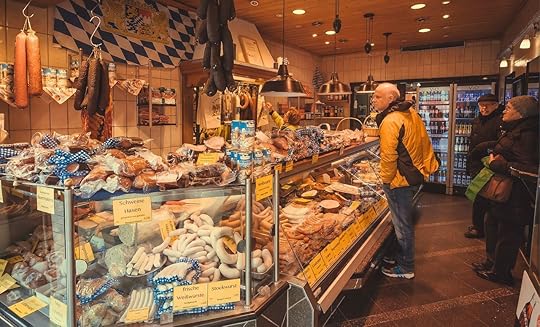
Photo: Radiokafka/Shutterstock
Germany has a diverse repertoire of dishes united by two things: a passion for kneading dough in elaborate shapes and a love for the many types of German sausage.
Get your hands on a brezn with obatzda (pretzel with cheese) and have a go at the hearty local dumplings stuffed with either meat or fish. Try the iconic Nürnberger Rostbratwurst — a grilled sausage with a fragrant mint flavor made of veal, beef, or, most often, pork.
One of the most beloved culinary products in Bavaria, this sausage dates back to the 14th century. According to legend, Nürnberger Rostbratwurst was so popular that German innkeepers used to sell it illegally to hungry customers past the hours of a curfew imposed during various epochs of history. Only three-inches in length, the sausage was passed through keyholes in an elaborate secret transaction. Luckily, today you can order a Nürnberger Rostbratwurst at any time of day or night, and the sausage is often present at local inns’ breakfast buffets.
Bavaria’s cuisine is so indulgent that even the salad is a sausage salad. A mix of Regensburger sausages, onions, chives, and vinegar, salt, and pepper to taste, Bayerischer Wurstsalat is the ideal appetizer. At the dinner table, you’ll also find some Allgäu mountain cheese — a dry cheese made of 62 percent unpasteurized cow milk with a three-inch rind colored in the signature dull shade of yellow and dotted by a few holes that’s a recognizable characteristic of alpine dairy products.

Photo: Kzenon/Shutterstock
Bavaria prides itself on its hospitality, and most eateries recreate the authentic atmosphere of a German home by inviting you right in. You’ll run into a multitude of beer gardens, and if you’re visiting in the summer, you’ll cool off in the shade of their thick chestnut trees. Bavaria is something of a paradise for beer. With more than 600 breweries and 40 types of beer, you can travel for over a month without having the same beverage twice.
Some must-try beer combos: Pair a cold glass of Helles, a light lager, with a semmelknödel — a fluffy mix of breadcrumbs, eggs, and milk the size of a tennis ball. Go for the iconic Bavarian pilsner — a pale lager with a bitter, earthy taste. Refresh yourself with a radler — a bubbly mix of equal parts Pilsner or lager and lemonade.
If you have a sweet tooth, you’re in luck. Start with a bowl of the traditional Bavarian Creme, which is a compote-based gelatinous dessert made of berries with a light vanilla flavor. Then reach for a slice of Zwetschgendatschi — a buttery flan made of cornflour and almonds.
Bavaria has over 15,000 acres of vineyards around its storybook villages.
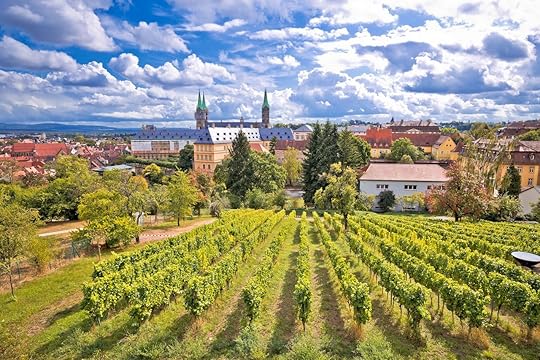
Photo: xbrchx/Shutterstock
Although more low-key than its neighbor France, Bavaria has plenty of wine to offer with its thriving viticulture. Franconia is the home to a number of grape varieties — blauer spätburgunder, müller-thurgau, bacchus, kerner, silvaner, and, of course, Riesling, which is perhaps the best-known of the bunch. In the winter, you have white glühwein to look forward to.
A spicy-sweet blend of white wine (typically produced from silvaner or müller-thurgau) is mixed with apple juice, plum brandy, orange and lemon slices, a stick of cinnamon, anise, cloves, and honey to produce the warm holiday drink that makes you feel warm and cozy on the inside. Glühwein is traditionally paired up with Lebkuchen biscuits from one of the stands at the Christmas markets. Each baker has a secret recipe for biscuits that they will never reveal, so you’ll just have to try them all.
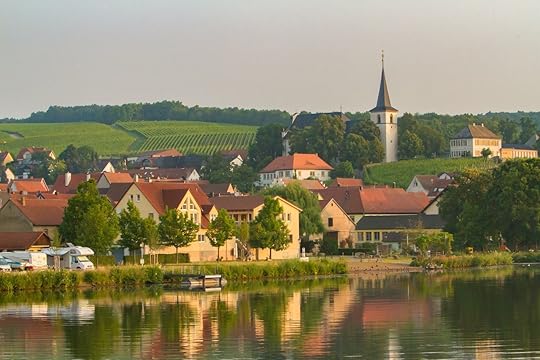
Photo: Bob Pool/Shutterstock
Many wineries are located in the area between Aschaffenburg and Schweinfurt, facing the slopes of the Main River. You have a myriad of “wine walks” to choose from. In Sommerhausen, you can explore the wine trail that leads you directly through the Siegelswäldchen Woods. This trail delivers stunning views of Ochsenfurt and Eibelstadt’s rolling hills.
If you head out on the Iphofen trail, you can visit the Julius Echter estate, the second-biggest winery in all of Germany, which has been around since 1576. Here you will learn all about the bocksbeutel — the pot-bellied, flat bottle that has become one of Bavaria’s staples. The shape was strategically designed to prevent the bottle from rolling when placed on a hill.
All three of these trails are known as “Terroir F” sites. The term dates back to the 16th century and refers to a region that has all the necessary conditions to produce great wine — fruitful soil, favorable climate, good location, and a diverse variety of grapes.
Where to stay
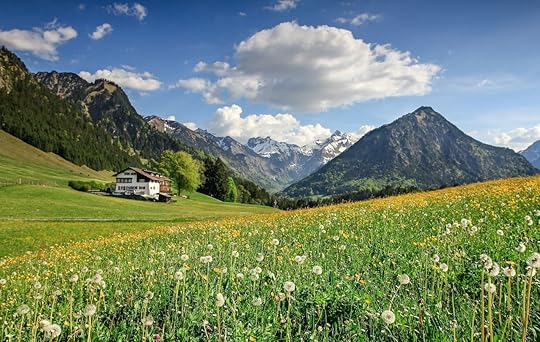
Photo: Drepicter/Shutterstock
You will find a great deal of choice in terms of accommodation in the region, with small inns dotting the Bavarian hills, all of them offering stunning views of sprawling meadows and picturesque valleys.
You’ll feel right at home at Zum Hausjacker — a rustic collection of vacation apartments located on a large dairy farm that lies in Wackersberg, near Bad Tölz. Here, you’ll soak up the alpine panorama at the foot of Mt. Heiglkopf. The area is perfect for hiking in the summer and cross-country skiing in the cold months. Zum Hausjacker offers spacious apartments furnished primarily with wood in a traditional Bavarian fashion.
The Berghaus Wahalo am See is a three-floor cottage that sits on the banks of Lake Walchen. Surrounded by a spectacular garden, this is the perfect summer destination as you’ll be less than a minute away from the crystal lake. The inn has three apartments. Each one is equipped with its own kitchen or kitchenette, a comfortable bed, and a balcony. The largest apartment has a fireplace, too, for an extra cozy time.
Located on the edge of the Alps, Alpenhof Bad Tölz can accommodate any type of guest and occasion. With single and double rooms and suites, the hotel has a modern yet rustic feel. The hotel has a swimming pool and a sauna where you can unwind after a long day of exploring the nearby Isarwinkel and Karwendel trails. The hotel offers guided tours if you want to take all planning out of the equation.
Whether you’re looking for an idyllic mountainous escape, a wine-tasting adventure, or simply a good meal in a homey environment — Bavaria has it all. 
More like thisHikingBeer hiking is a thing, and it’s awesome. Here’s where to do it.
The post Soak up stunning views, booze, and brats on the Bavarian Gourmet Trail appeared first on Matador Network.

Española tortoises returned

Fifty-five years ago, the Giant Tortoise Restoration Initiative gathered all the Española tortoises from Española island in the Galapagos — 12 female and two males — as well as one male kept in the San Diego Zoo, with the hopes that these individuals, the last of their species, would breed and help bring back the Española tortoises from the brink of extinction.
The captive breeding program, praised as one of the most successful in the world, ended in June, and the tortoises have been brought back to their home turf for a much-deserved rest.
From when the program started in the 1960s until this past June, the initiative has been able to reintroduce 1,900 tortoises to their island of origins, where they have thrived and bred naturally. Today, there are more than 2,300 Española tortoises on Española island.
During their reintroduction into the wild, the tortoises were brought from Santa Cruz Island to Española by boat, then carried 1.5 miles inland to Las Tunas, which is believed to be the area most suitable for their survival as it is where the largest number of Opuntia cacti, the primary food for tortoises, is concentrated.

Photo: Andrés Cruz + Giant Tortoise Restoration Initiative/Facebook
Danny Rueda, director of the Galapagos National Park, said in a press release, “The 12 females, weighing an average of 77 lbs, were carried by a single person, while for the 3 males whose weight exceeded 120 lbs, two people were needed in relays. After the release, the staff remained for approximately four more hours, making observations of the behavior of the tortoises as they settled back into their home.”

Photo: Andrés Cruz + Giant Tortoise Restoration Initiative/Facebook
In six months, scientists from the Giant Tortoise Restoration Initiative will monitor the tortoises in person, but for now, they are being closely surveilled thanks to the GPS satellite devices fitted in each turtle and motion-triggered cameras set up in the area. 
More like thisBeaches + Islands10 things you can do in the Galapagos Islands other than look at tortoises
The post 15 Galapagos tortoises finally return home after saving their entire species appeared first on Matador Network.

Immersive Pompeii exhibition

A new exhibition at the Grand Palais in Paris will recreate the final hours of Pompeii, just before it was devastated by the eruption of Mount Vesuvius in 79 CE. Created in collaboration with the Pompeii Archaeological Park, “Pompeii” uses 3D images, drone footage, laser cartography, infrared imagery, and photogrammetry to recreate the ancient city and modern archaeological site.
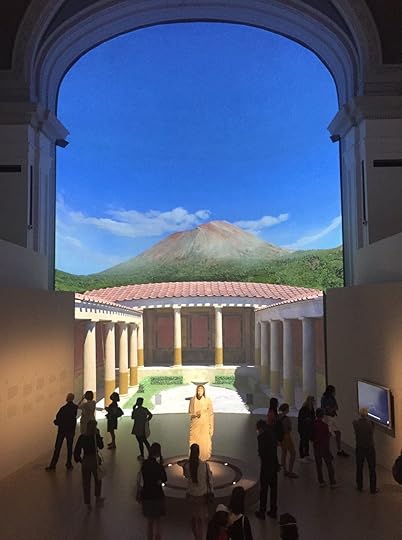
Photo: Grand Palais/Facebook
Although the exhibit was originally scheduled to open in March, it was delayed along with many other exhibits by the COVID-19 pandemic. Instead, a virtual preview was released in April, including an audio guide, video tours, and augmented reality experiences. Now, it’s running from July 1 to September 27, 2020.

Photo: Gédéon Programmes/Facebook
Roei Amit, head of the Paris cultural institution’s digital department, told the Financial Times, “[T]his show is not about the technology but about the place. We have virtual reality and augmented reality of course but they are not central to the exhibition. Instead we are making a hybrid experience, about how we can tell the story in the best way.”

Photo: Gédéon Programmes/Facebook
Upon entering the exhibit, visitors will walk through a 200-foot-long alleyway surrounded by recreations of Pompeiian houses, fountains, and citizens, overlaid with layers of present and past. The exhibit is divided into four parts, including excavations, frescoes, specific discoveries, and Pompeii’s existence as a Roman city. Artifacts like a statue of Livia, a marble rabbit, gold jewelry, and plaster casts of those killed by the eruption, will be on display. 
More like thisNewsAmazing 2,000-year-old shrine found under the ash in Pompeii
The post New immersive Pompeii exhibit brings the last hours of the city back to life appeared first on Matador Network.

Hotel Trio in Sonoma, CA, rose robot

The hospitality industry is getting a major overhaul in the COVID-19 era, and that even includes room service. To limit touchpoints and interaction between guests and staff, one hotel uses a room service robot called Rosé, whose sole job is to deliver goodies to your room.
Hotel Trio in Healdsburg, CA, is enlisting the services of Rosé the Robot to provide state-of-the-art service in the era of social distancing, delivering wine, or anything else your heart desires, right to your room. The robot can autonomously travel down hallways, onto elevators, and locate guest rooms while flashing a message en route that says, “I’m on a guest delivery.”
Brooke Ross, director of Hotel Trio, told Sonoma Magazine, “In addition to Rosé being super helpful, people absolutely love her. We have a beautiful lobby, a really great bar, bocce balls that light up when you play at night, but Rosé is hands down the most frequently photographed feature of our hotel.”
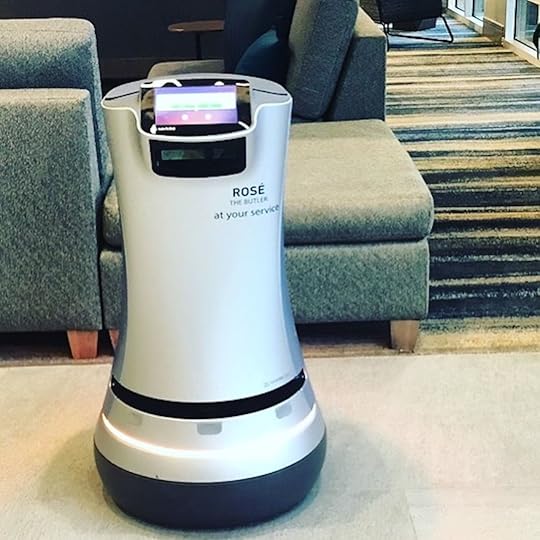
Photo: Hotel Trio Healdsburg/Facebook
Since the hotel is located close to several Sonoma County wineries, including Dry Creek Vineyard, Flanagan Winery, and Francis Ford Coppola Winery, Rosé the Robot will be delivering some of the area’s best local wines.
In addition to Rosé, Hotel Trio is also implementing other measures to keep people safe and reduce unnecessary interaction, including mandatory mask-wearing and heightened sanitation measures. 
More like thisWineDrive past Napa for your first trip to Northern California wine country
The post This California hotel has a robot deliver wine to your room to avoid human contact appeared first on Matador Network.

Sustainable swimwear brands

Fashion is more than just showcasing our personal style. In recent years, the clothing we wear and products we use have become a statement about our view of the world and the causes we support. From choosing sunscreens that won’t damage coral reefs to dining at sustainable restaurants, consumers are becoming more conscious of their dollar’s impact. With environmental health being a pressing issue, many brands and shoppers are turning away from fast fashion and choosing sustainable swimwear.
Businesses are making strides toward breaking the vicious cycle of landfills and pollution by using recycled materials and minimizing the harmful effects on the environment, while simultaneously promoting body positivity. Focused on reducing the use of raw materials and keeping plastic out of our oceans, these nine sustainable swimwear companies make bathing suits you can wear at the beach this summer with a clear conscience.
1. Batoko Swimwear
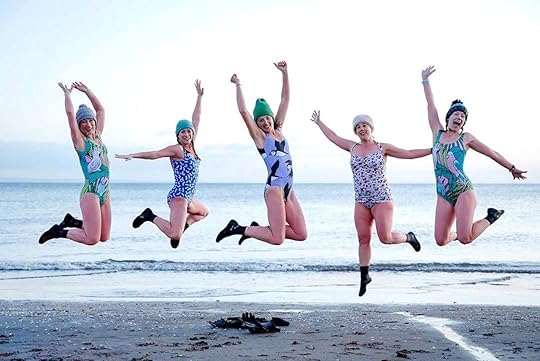
Photo: Batoko/Facebook
A small, independent brand based in England, Batoko Swimwear creates flattering bathing suits that not only make you look good but also feel good, as each piece is made of 100 percent recyclable materials. The brand’s mission is to keep plastic out of landfills and oceans, so its main focus is on upcycling waste that is then transformed into stylish swimwear.
Batoko was founded in 2017 when the creators decided to take action against the polluted English beaches and raise awareness of the issue. Batoko has always kept production small in order to focus on the longevity of each swimsuit and avoid overproduction that leads to waste. The brand also supports the UK’s Marine Conservation Society by making a yearly donation.
2. BAIIA

Photo: BAIIA/Facebook
Australian brand BAIIA is all about versatility, elegance, and sustainability. Each reversible bathing suit is made of durable, recycled nylon from Italy, produced from post-consumer waste such as carpets, plastic bottles, and textiles. BAIIA’s vision for swimwear is to be the “pioneer of compassion” for women, which is why the brand promotes body positivity with designs that go up to size 18. BAIIA’s marketing campaigns are all-inclusive, showcasing plus-size and diverse models to accurately represent their real customer.
3. Aggie Swimwear

Photo: Aggie Swimwear/Facebook
Designed by one of Instagram’s best-traveled influencers, Aggie Swimwear is the creative quest of Aggie Lal to support the planet while offering an ethical line of bathing suits for women. Produced in Bali in a female-run factory, the swimsuits are made from recycled fishing nets and plastic bottles. Each bathing suit features double fabric for maximum durability and is named after a different destination from Lal’s journeys, like “Argentina top” and “Australia peach.”
4. Londre Bodywear

Photo: Londre Bodywear/Facebook
Londre Bodywear tackles sustainability along with promoting body positivity by creating beautiful swimwear for women of all shapes and sizes. Co-founders and best friends Ainsley Rose and Hannah Todd came up with the concept while working on a photoshoot in Sayulita, Mexico. The duo decided to create flattering bathing suits that would have a minimal impact on the environment. To date, Londre has recycled over 90,000 plastic bottles. Additionally, each swimsuit made by the brand can be recycled at the end of its lifetime. Though this is a small business, the co-founders have been able to donate $10,000 to Amazon Watch and the Yellow Hammer Fund — organizations that support the rainforests and endangered bird species.
5. Summersalt

Photo: Summersalt/Facebook
Summersalt’s brand ideology is to explore and protect the world, which is why the label uses exclusively recycled materials for its swimwear. Each piece is made of 78 percent recycled polyamide — a material produced by recycling nylon and old fishing nets. Summersalt’s bathing suits have been tested for durability by a prolonged, 100-hour use in chlorinated water to ensure that the material remains sturdy and uncompromised. Each bathing suit offers SPF50 protection and withstands up to four times more compression to keep its shape even after hundreds of uses.
6. lemlem

Photo: lemlem/Facebook
lemlem is an artisan-focused collection of swimwear dreamed up by supermodel Ilya Kebede on a trip to her native Ethiopia. Kebede was on a trip home when she met a group of weavers who no longer had a market for their craft. This inspired her to raise awareness about Ethiopian fashion and support local artisans by creating new jobs. Made in Africa, the line is inspired by Ethiopia’s traditional tibeb pattern combined with high-quality fabric. According to the website, “Women are at the heart of lemlem and the brand is committed to helping them thrive both within its workshops and beyond through its support for lemlem Foundation.”
The main material used is organic cotton, which is native to Ethiopia having been cultivated in local farms for centuries. A portion of the brand’s proceeds goes to the Amref Health Africa organization which trains midwives in Africa.
7. Lilliput & Felix

Photo: Lilliput & Felix/Facebook
Lilliput & Felix swimwear takes sustainability to heart and holds a Positive Luxury Butterfly Mark certification which ensures the brand’s commitment to environmental support. All of the swimsuits are made from recycled elastane and polyamide, often manufactured from repurposed materials such as leftover fabrics.
The swimwear is produced in small factories working only with sustainable carriers and comes in a variety of vibrant, eye-catching colors and prints. The packaging is minimal and features a thin layer of recycled paper delivered in a biodegradable postal bag made of corn.
8. You Swim

Photo: youswim/Facebook
You Swim’s secret to sustainability is that the brand produces one size only. The swimsuit is made from a tight-knit yet super stretchy fabric that allows it to expand to size 14 and shrink back to a size two. This way, You Swim is able to cater to a wider range of customers, offering everyone the same level of comfort. Since each piece is one size only, the company barely has any leftovers and thus has reached an almost zero-waste operation.
You Swim’s beachwear is made in England by hand. The brand is focused on longevity and can be worn through various stages in a woman’s life, including a pregnancy. All swimwear comes in recyclable packaging.
9. Wolven

Photo: Wolven/Facebook
“Make sustainability sexy” is Wolven’s leading approach to swimwear that dictates every aspect of the brand. Each piece is made of OEKO-TEX — recycled P.E.T fabric that comes from plastic bottles. The brand has also partnered up with Climate Neutral to effectively measure and minimize its carbon footprint to zero.
The swimsuits are made for the planet and inspired by it. Wolven’s flattering geometrical shapes and quick-drying, moisture-wicking fabric make the bathing suits ideal for surfing, swimming, casually lounging on the beach or even hitting up brunch. The brand ethically produces its swimsuits in collaboration with a factory in China which scores 87 percent overall as a facility, meaning that workers are paid fairly and treated well in a safe environment. 
More like thisSustainability11 sunscreens you can wear this summer that won’t harm coral reefs
The post 9 sustainable swimwear brands to don at the beach this summer appeared first on Matador Network.

North Korean ski resort
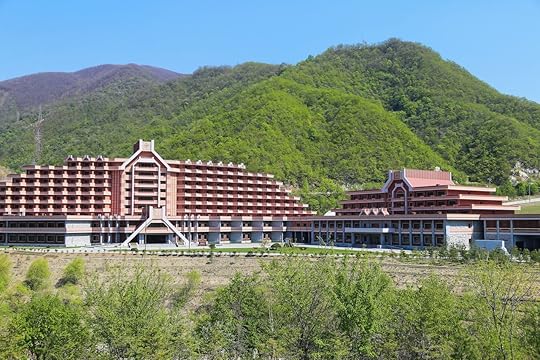
The European Alps, the Canadian Rockies, and Hokkaido, Japan, are great ski destinations with one thing in common — they’re far more likely to be on avid skiers’ radars for next season than North Korea.
In an attempt to attract international tourists, the Democratic People’s Republic of Korea has registered a trademark with the United Nations to cover the Masikryong hotel located next to its $35 million Masikryong luxury ski resort.
Located in the coastal town of Wonsan, east of Pyongyang, the Masikryong Hotel was built to house primarily Chinese tourists, who make up the bulk of North Korea’s foreign currency, according to the Korea Herald.
North Korea’s leader, Kim Jong-un, is apparently quite the skier and believes that ski resorts are key to keeping international tourists coming to the nation after the COVID-19 pandemic.
The ski resort features 10 runs served by a cable-car system imported from Austria. A photo in the Korea Herald showed Kim Jong-un riding a two-person chairlift at the resort back in 2013, suggesting that it has more than one way to reach the slopes. The paper also reported an ice skating rink on-site.
Don’t get lost in powder dreams just yet, however. Americans are advised by the US Department of State to avoid all travel to North Korea, “due to the serious risk of arrest and long-term detention of U.S. nationals,” according to the department’s current North Korean travel advisory. Should detention happen on your trip, it is very unlikely that US officials would be able to help. Any travelers to North Korea need special validation from the US government, and your craving for fresh powder likely won’t cut the mustard. 
More like thisHow to visit Rason, North Korea’s Special Economic Zone
The post North Korea registers trademark for ski resort hotel to attract international tourists appeared first on Matador Network.

Matador Network's Blog
- Matador Network's profile
- 6 followers



